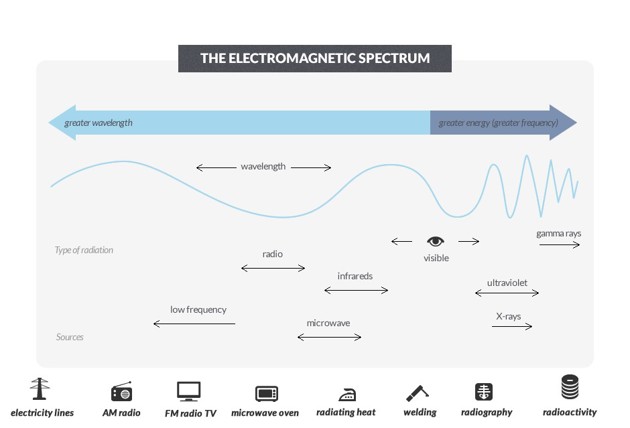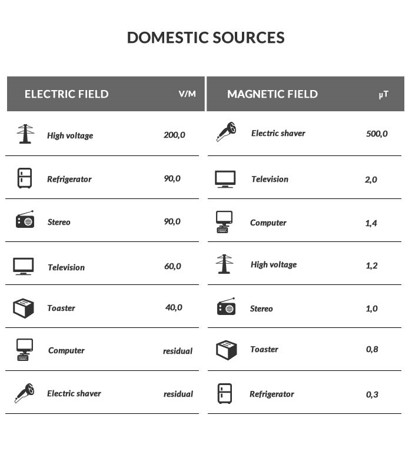Electromagnetic fields
Electricity is crucial in everyday life in developed countries. Thus, it is important to characterise Electromagnetic Fields (EMF) regarding their interaction with living beings.
EMFs can be divided into static and low-frequency electric and magnetic fields, which include electricity transmission lines, domestic appliances and computers, and high-frequency or radio-frequency fields, which include radar, radio and television transmitters, mobile phones, among others.

Energy transmission and distribution lines (very-high, high, medium, and low voltage), transformer stations, domestic electrical installations, and electrical equipment (for example, irons, hairdryers, shavers, hoovers, toasters) are sources of environmental exposure to EMFs. At low frequencies (of the order of 50 hertz), as is the case here, the electric and magnetic fields can be considered separately and there is no actual electromagnetic wave production.

High frequencies (of the order of kilohertz, megahertz, and gigahertz), namely radio frequencies, and especially hyperfrequencies, have two types of applications – they are sources of heat and they function as carriers of information. The World Health Organisation (WHO) differentiates between high- and low-power radio frequency sources. Examples of high-power sources are television and radio broadcast transmitters and surveillance and air traffic control radars. Examples of low-power sources are cordless phones, remote controls, and microwave ovens.
– Within any living organism there are endogenous electrical currents, which play an important role in neuromuscular activity.
– The effects of external exposure of the human body and its cells to EMFs depend mainly on their frequency and magnitude or intensity. Compliance with the exposure limits recommended in national and international regulations helps to control the risks of EMF exposures that may be harmful to human health. Source: WHO, Ed. 2002 “Establishing a Dialogue on Risks from Electromagnetic Fields”.



